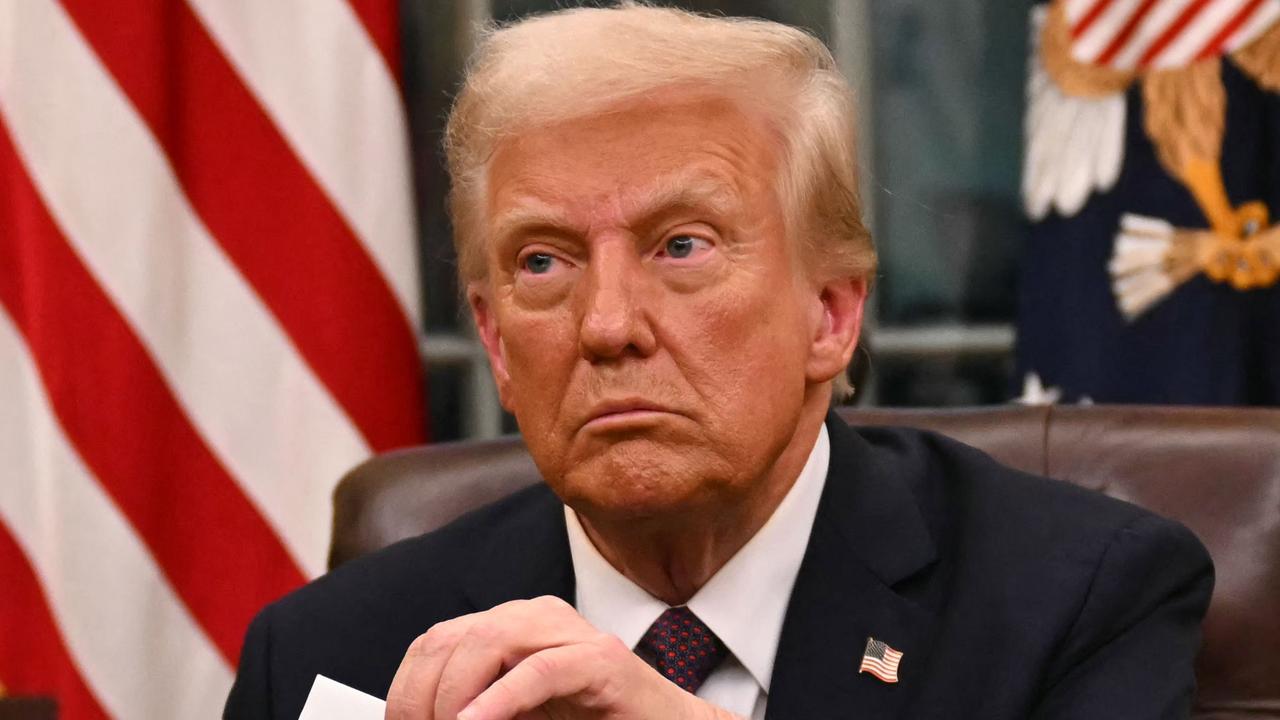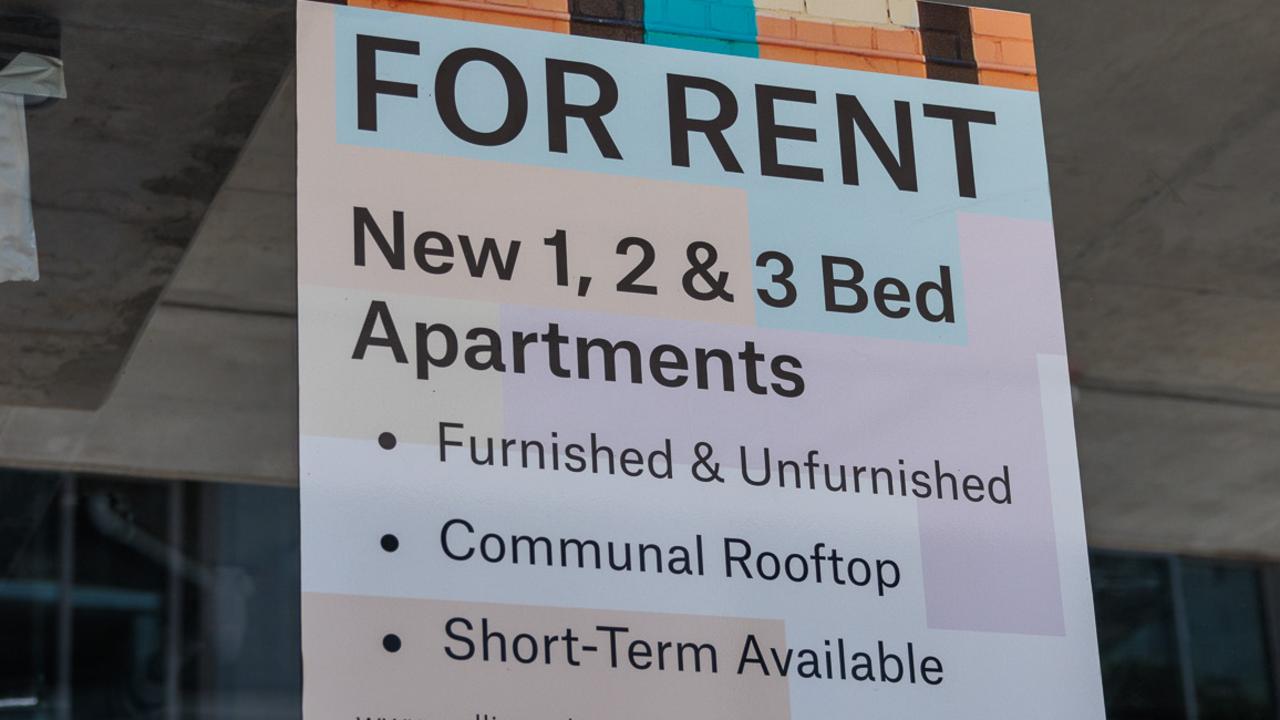Australia’s bad habit is helping fuel one country’s descent into hell
This country might feel a million miles away but an Australian habit is helping to fuel a war in a place once known as the “island of peace”.
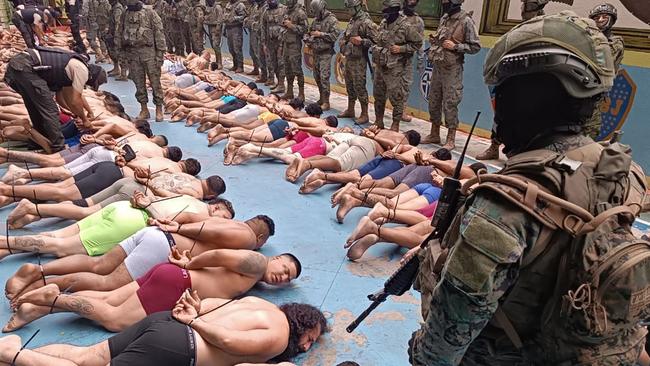
Economy
Don't miss out on the headlines from Economy. Followed categories will be added to My News.
Australia’s drug addiction is fuelling a new civil war across the Pacific.
Once known as South America’s “island of peace,” Ecuador is now a battleground for duelling cartels and corrupt politicians.
It’s the gateway to the Galapagos Islands.
It’s a springboard to the Amazon jungle.
It’s home to a World-Heritage-listed Conquistador city.
It also had an enviable reputation as a democratic bastion of law and order, standing firm amid a continent wracked with political and criminal violence.
No more.
“A national state of emergency is in place,” an Australian travel advisory warns. “Avoid demonstrations and protests that may occur due to the current political situation.”
“Spend a few days in any major Ecuadorian city, and it won’t take long to understand why,” explains Council on Foreign Relations fellow Will Freeman.
“In the port cities of Guayaquil and Esmeraldas, where the violence is most intense, massacres, targeted assassinations of police and public officials, and car bombs have become weekly occurrences. In parts of Quito, the capital, shops now close early, and police stop patrolling at night. Across the country, extortion networks are strangling businesses large and small — even in the remote Galapagos Islands.”
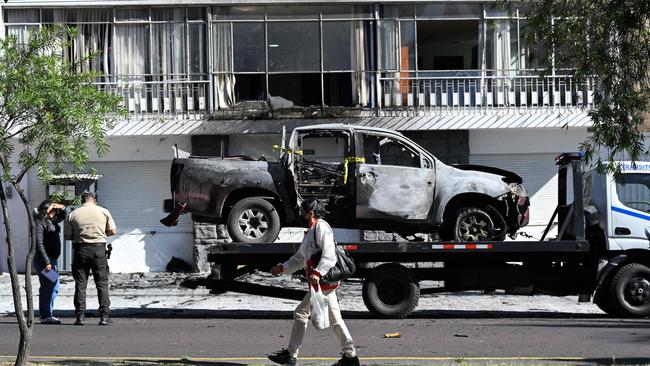
Ecuador’s democracy has the odds stacked against it.
It sits between two of the world’s largest narcotics producers – Peru and Colombia.
And the assassination of an anti-corruption presidential candidate on August 9 marked a turning point for the nation of 17.8 million.
“The attack reflects a deepening security crisis in what was once one of South America’s safest countries but where transnational criminal groups exert increasing control,” says Carnegie Endowment for International Peace scholar Oliver Stuenkel.
“Ecuador’s location makes its ports a prime spot to export cocaine to international markets.”
That means the United States, Southeast Asia – and Australia.
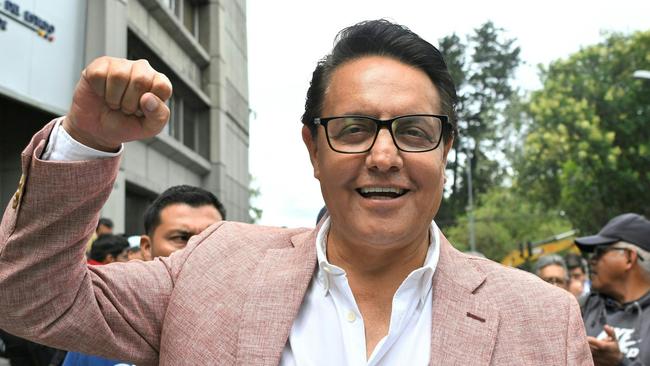
The Australia connection
Two massive cocaine seizures in Australia and New Zealand earlier this year reveal the scale of South American drug cartel operations.
In March, Australia’s Federal Police revealed that 2.4 tonnes of cocaine worth some $677 million had been intercepted by US enforcement officials off the coast of Ecuador last November. This had been switched for fake narcotics and tracked to a point 75km off the coast of Perth. Three men attempting to retrieve the packages were arrested on December 30. Nine others were detained following further investigations.
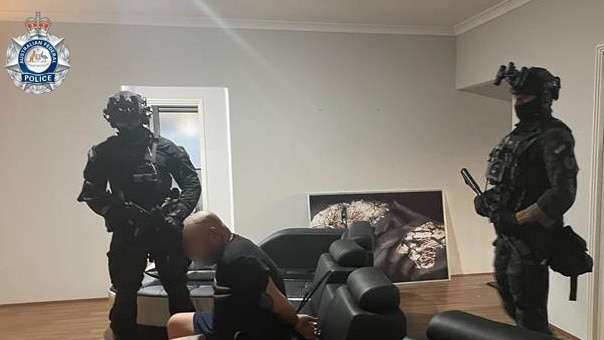
In February, another 3.4 tonnes of cocaine was discovered floating in the ocean off New Zealand. Authorities believe it was a drop-off point in a relay chain leading to Australia.
US-based think-tank InSight Crime says the high price of cocaine in Australia makes the problematic logistics of moving the drugs through the Pacific Islands to Australia and New Zealand “worth the trek”.
“As cocaine production continues to soar, traffickers may be willing to brave more risks to get across the Pacific Ocean, given the profits involved,” a report reads.
“And while the latest discoveries were surprisingly large, they represent a logical escalation.”
It adds that the prime suspect behind the shipments is the Sinaloa Cartel – Mexico’s most significant criminal gang.
“Using connections in Peru and Ecuador to secure cocaine shipments, the Sinaloa Cartel has also teamed up with Australia-based biker gangs to distribute the drugs locally.”
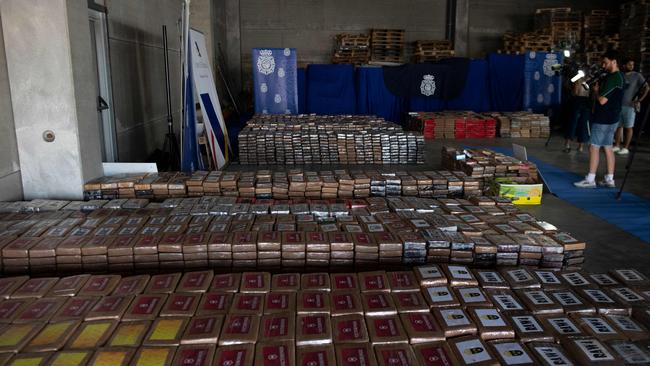
A Lowy Institute study last year found this Pacific “drug highway” was “one of the most serious security issues facing the Pacific Islands region”.
“There is a growing recognition that transnational crime can generate significant insecurity, disrupt traditional and cultural mechanisms, fuel corruption, weaken key security sectors, and undermine formal and informal governance,” it reads.
Ecuador is a living example of this.
Its shipping facilities enable mass export as far afield as Europe. In July, officials in the Netherlands found eight tonnes of cocaine worth more than $A1 billion bundled in thousands of packages among pallets of bananas.
“The outlook for Ecuador isn’t promising,” adds University of Essex Professor Nicolas Forsans.
“Global demand for cocaine continues to increase and production in Colombia is at a record high. The UN estimates that one-third of Colombia’s illicit coca fields are located within 10km of its frontier with Ecuador.
“This can only mean that Ecuador’s role in the drug supply chains continues to grow in importance.”
State of anarchy
“Gone are the days when Ecuador was known as “the island of peace” due to its location between historically war-torn Peru and Colombia”, writes Freeman. “Now, the country looks increasingly like its neighbours at their most violent — only with a much weaker state that increasingly bears the hallmarks of criminal cooptation.”
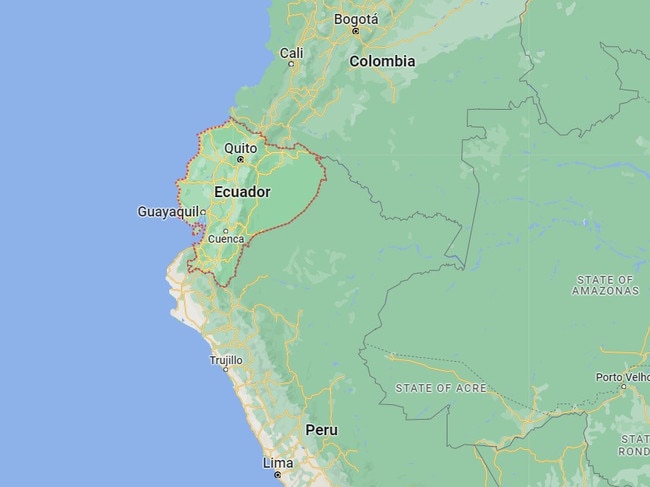
The small equatorial nation has no history of being a major drug producer.
Nor has it a history of guerrilla gangs or political warfare.
But the peace and prosperity Ecuador has enjoyed in recent years appears to be working against it.
It has well-maintained roads. Its port and airport infrastructure are good. Its economy, based on the US dollar, has strong international connections.
This, says Freeman, has “lowered the costs of doing business” for the drug cartels.
And Ecuadorian politicians, executives and officials are cashing in.
Crime gangs have been financing candidates for local council elections.
A police anti-narcotics director has been labelled a “narco-general” by US officials.
And, in 2018, a ton of cocaine was found inside an Ecuadorian air force base.
Now, the body count is soaring.
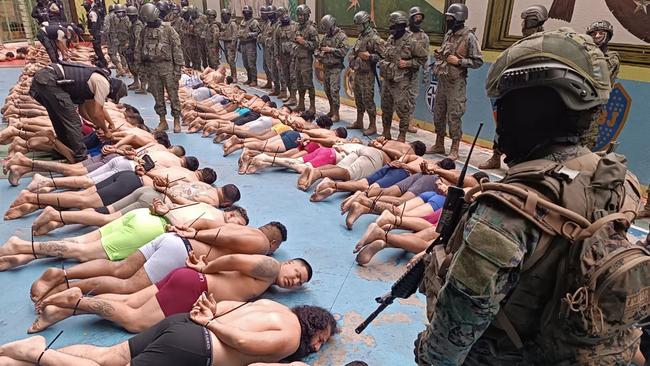
Rival drug lords are competing for access to the nation’s infrastructure. In 2022, the homicide rate dramatically jumped to 22 deaths per 100,000 people.
But, until this year, Ecuador had been largely free of serious political violence.
Then, in July, Agustín Intriago – the Mayor of the port city of Manta – was gunned down shortly after winning a second term.
And, on August 9, presidential candidate Fernando Villavicencio – who had been campaigning against drug cartels and corruption – was assassinated in a co-ordinated attack.
“There’s this desperation. There’s a lot of fear because it feels like our country is in the hands of these drug cartels and mafia, and we do not even know who they are,” says Ecuadorian political scientist Arianna Tanca. “The state has no control over it. Our destiny and future are in these people’s hands because no one can actually fight them.”
Gang invasion
The United Nations’ 2023 Global Report on Cocaine states the Cártel de Sinaloa and Cártel Jalisco Nueva Generación “largely control the trafficking corridors between Mexico and the US” and are fighting each other for dominance.
Former journalist Villaviciencio had named both as being behind Ecuador’s growing political corruption.
“As of right now, we are kind of suffering the consequences of past administrations in their foreign policy or internal security policies,” says Tanca. “There’s a lot of groups fighting over power, fighting over territory. Some of them are branches of cartels from Mexico and cartels from Colombia. One of them is actually from Albania. We have so many gangs fighting over the territory here because now Ecuador is a distribution centre.”
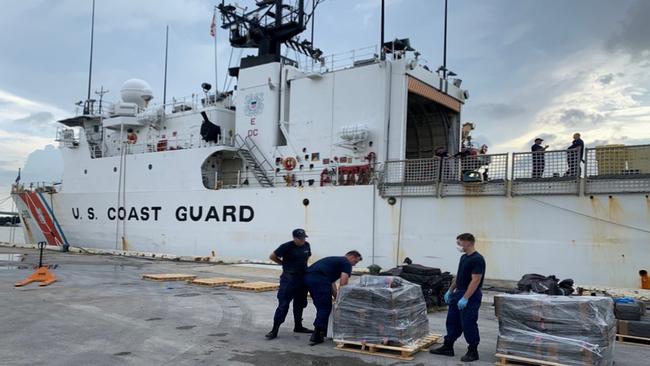
Former president Rafael Correa spent a decade in office between 2007 and 2017.
“Correa reduced Ecuador’s homicide rate to a historic low through a combination of increasing policing, reducing poverty and inequality, and allowing the countries’ gangs to transform themselves into cultural associations if they left behind violence,” says Freeman.
But Correa believed the drug trade was a problem for drug-consuming countries. Not Ecuador.
So, he ordered an end to co-operation with the US Drug Enforcement Agency and closed a US military base.
“As a result, Ecuador’s maritime exclusive economic zone — the fifth-largest in South America, covering over 1 million square kilometres of ocean — was left effectively free of surveillance,” says Freeman. Combined with freshly privatised seaports and airports, this eased the flow of illicit drugs through the country.
“There are now disturbing signs that organised crime has co-opted parts of the state,” Freeman adds. “Provincial judges grant writs of habeas corpus to release suspects in organised crime cases from provisional detention at alarming rates. High-ranking members of the police and judiciary attest to the existence of “armies of lawyers” in every Ecuadorian province who have finessed the art of procuring impunity.”
But gang activity isn’t just targeting politicians, journalists and police, says Tanca.
“They will kill you over the phone. They’ll call your store and tell you, “If you do not give me $600 or $6000, I will kill you”. And I’m afraid we are looking at the tip of the iceberg.”
Downward spiral
President Guillermo Lasso triggered a constitutional measure to call joint presidential and congressional elections in May.
“The past year of Lasso’s tenure saw mass protest, economic stagnation, low approval ratings, and corruption allegations — alongside his near-certain impeachment, which he avoided by calling early elections,” says Stuenkel.
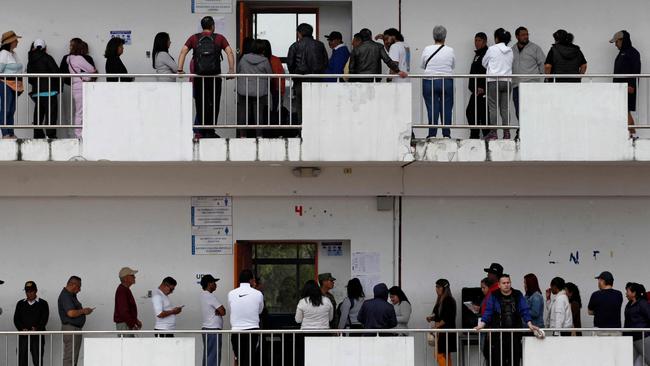
Some of Lassao’s closest friends and advisers have been linked to the Albanian mafia. Two police generals were caught on tape discussing how to halt the investigation and protect the president.
“Even if Lasso is completely innocent, the scandal speaks to an alarming lack of vetting at the highest levels of the state,” adds Freeman. “More concerningly, since the scandal broke, one top suspect has become a fugitive from justice. Another turned up dead, with signs of torture.”
Meanwhile, Ecuadorian politics has become increasingly partisan.
“You’re a shameless coward,” former president Correa told anti-corruption campaigner Villavicencio late last year. “Soon, your party will be over.”
Villavicencio took the accusation – and death threats from the cartels – to heart.
He recently told a campaign rally that he would rather wear a “sweaty shirt” than a “bulletproof vest.” “I don’t need it. I’m not afraid. I am brave, like you. Let them come. Here I am.”
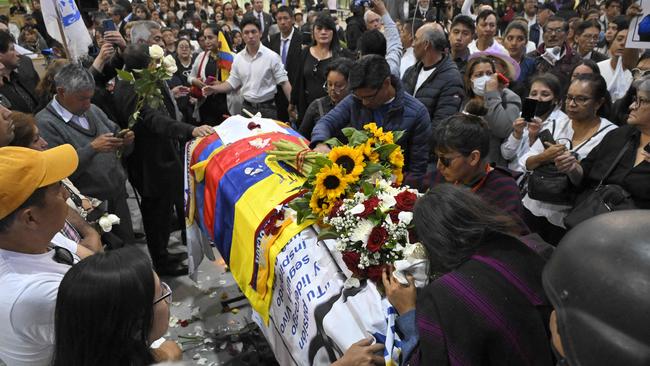
Villaviciencio was not a strong contender for the presidency when he was shot three times in the head. But he was steadily rising in the polls. And he was the only candidate to confront the influence of the drug gangs.
Shortly after his assassination, Correa posted a message to Twitter: “Ecuador has become a failed state”.
Han asesinado a Fernando Villavicencio. Ecuador se ha convertido en un Estado fallido.
— Rafael Correa (@MashiRafael) August 10, 2023
Dueles Patria.
Mi solidaridad con su familia y con todas las familias de las vÃctimas de la violencia.
Los que pretenden sembrar aún más odio con esta nueva tragedia, ojalá entiendan que…
August elections have not allayed these fears.
The leading candidate is Luisa González is a protégé of Correa. She was convicted of corruption in 2020 and is campaigning in exile from Belgium.
“Many of her supporters have fond memories of Correa’s time in office, shaped by a commodity boom and economic growth,” says Stuenkel. “But critics point to excessive public spending, corruption scandals, and clear authoritarian tendencies.”
Daniel Noboa is the son of a banana tycoon. He’s made a bid for the presidency five times previously. Now, he only makes public appearances covered in body armour among swarms of armed guards.
“Neither candidate has a clear path to victory in the October run-off,” Stuenkel adds.
Whoever wins will have little chance of making a difference before the next general election, scheduled for 2025.
“And unless the region’s governments can work together and adopt a unified strategy, Ecuador will be unable to tackle many of the root causes of the security crisis, which are located outside of its borders,” Stuenkel concludes.
Originally published as Australia’s bad habit is helping fuel one country’s descent into hell




